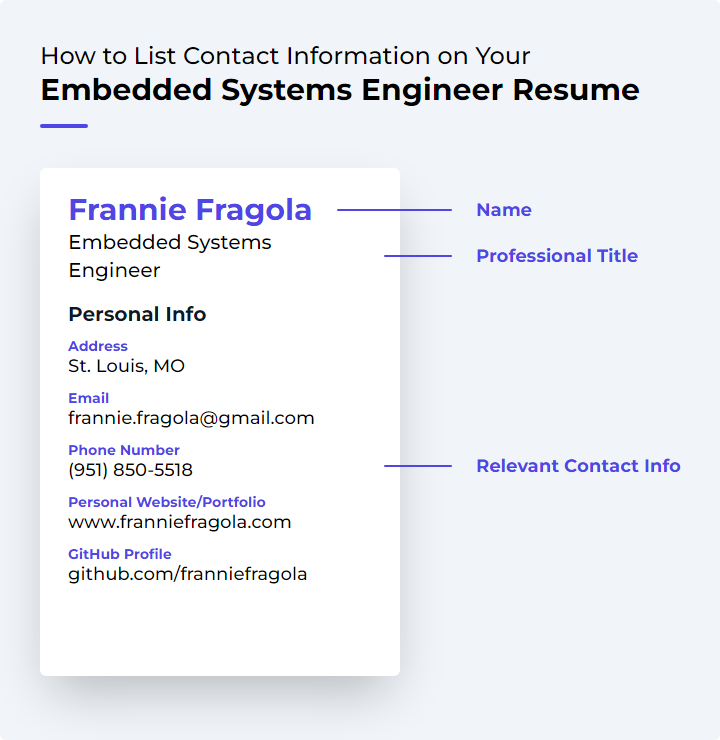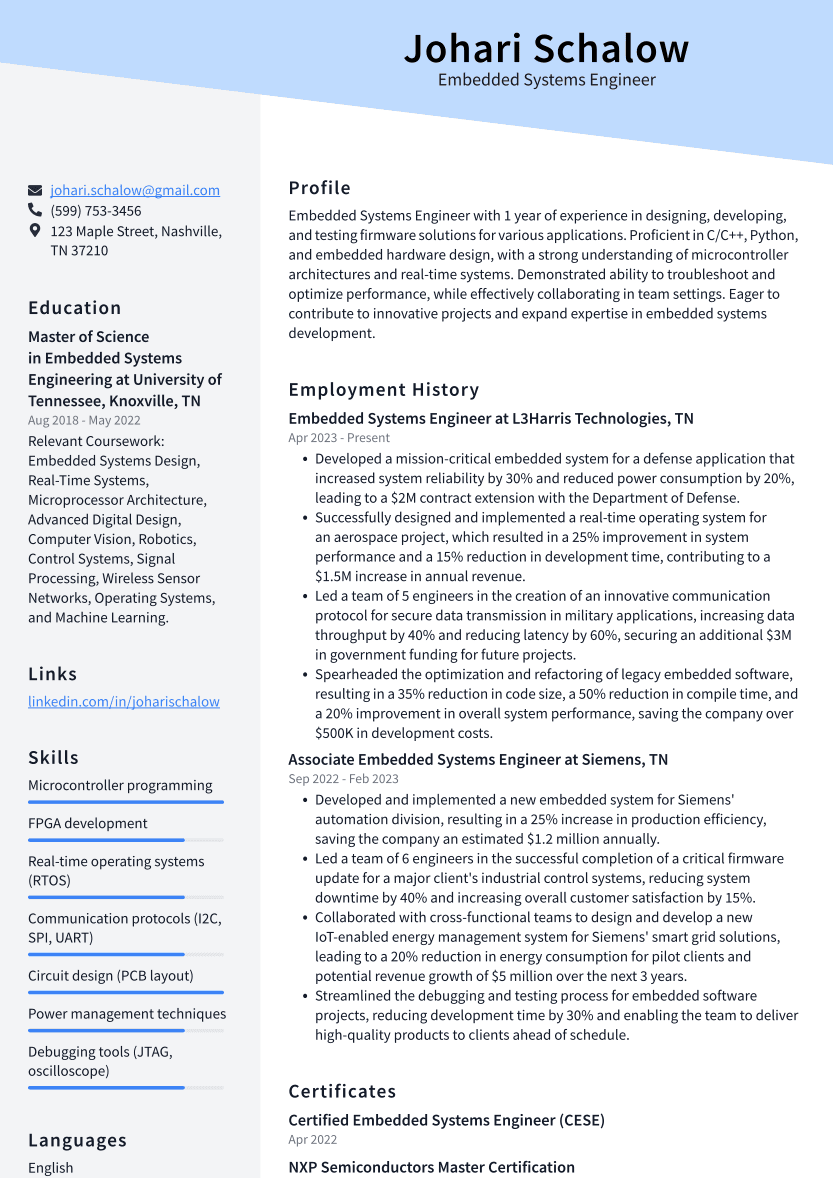Embedded Systems Engineer Resume Examples
Writing a great embedded systems engineer resume is important because it is one of the first things a potential employer will see when they are considering you for a position. It is your opportunity to make a good first impression and sell yourself as the best candidate for the job.
Create your resume
Select from 7 professional resume templates
If you're looking for inspiration when it comes to drafting your own embedded systems engineer resume, look no further than the samples below. These resumes will help you highlight your experience and qualifications in the most effective way possible, giving you the best chance of landing the embedded systems engineer job you're after.
Essential Components of an Embedded Systems Engineer Resume
An Embedded Systems Engineer's resume is a critical document that showcases their expertise in designing, developing, testing, and improving embedded system software. It serves as a narrative of their professional journey, demonstrating their proficiency in integrating hardware and software to meet specific operational requirements. This resume is pivotal during job searches, offering prospective employers a glimpse into the candidate's capabilities and fit for the role. We will delve into the key sections of an Embedded Systems Engineer's resume, discussing their significance and content, and providing tips to make each section stand out.
Contact Information
At the top of your resume, ensure your contact information is prominent and readable, facilitating easy communication from potential employers.

Include your full name, phone number, and a professional email address. Consider adding your LinkedIn profile, personal portfolio website, or GitHub account to showcase your embedded systems projects.
- Avoid personal details such as marital status or social security number.
- There's no need for a 'contact information' title, as it's self-explanatory.
Accurate contact information is essential for potential employers to reach you regarding job opportunities.
Objective Statement
The objective statement sets the tone for your resume, succinctly conveying your career goals and how they align with the prospective employer's needs.
For example: "As a skilled Embedded Systems Engineer, I seek to leverage my C++ proficiency and RTOS expertise in a challenging role at XYZ Company, contributing to innovative embedded software solutions."
Focus on what you can offer the employer, avoiding generic statements. A well-crafted objective can capture a recruiter's attention and encourage them to read further.
Skills and Competencies
This section should highlight relevant technical and soft skills, allowing employers to assess your fit for the role.
- Technical Skills: Include programming languages, microcontroller knowledge, RTOS familiarity, and experience with hardware and software debugging tools.
- Soft Skills: Emphasize problem-solving, attention to detail, communication, and project management abilities.
- Certifications: Mention any relevant certifications such as CSDP or CSEP.
Customize this section for each job application, aligning your skills with the employer's requirements.
Work Experience
List your work history in reverse chronological order, detailing your responsibilities and achievements, particularly those relevant to embedded systems engineering.
Quantify your accomplishments and mention specific tools, technologies, and methodologies you've used. Highlight any significant projects and, if you're new to the field, include internships or relevant academic experiences.
Education and Certifications
Detail your educational background, including degrees and any significant projects or achievements during your studies.
List certifications and additional training relevant to embedded systems engineering. Include participation in workshops, seminars, and online courses that demonstrate your commitment to continuous learning.
If you have published papers or hold patents, these can significantly enhance your resume.
Projects and Achievements
Detail key projects you've worked on, your role in them, the technologies used, and any notable successes or recognitions.
Emphasize teamwork and leadership experiences, showcasing your ability to collaborate and potentially lead in project settings.
References
References can strengthen your application, but it's often sufficient to state "References available upon request" to save space and provide them later in the hiring process.
When listing references, include their name, title, company, contact information, and your relationship with them.
Good references can be instrumental in securing your desired position as an Embedded Systems Engineer.
Remember to tailor your resume to the specific role you're applying for, ensuring that each section is concise yet comprehensive, reflecting your qualifications and potential as an Embedded Systems Engineer.